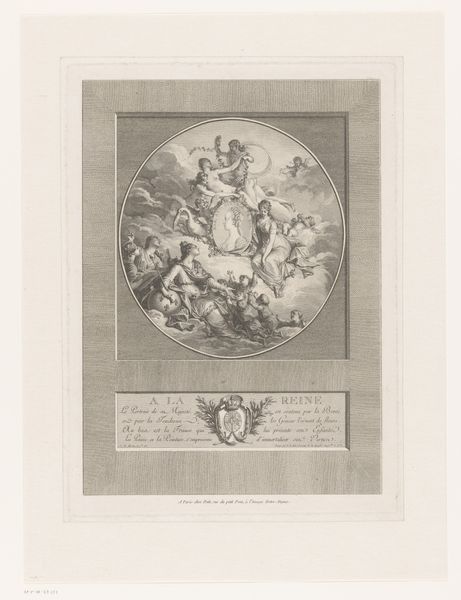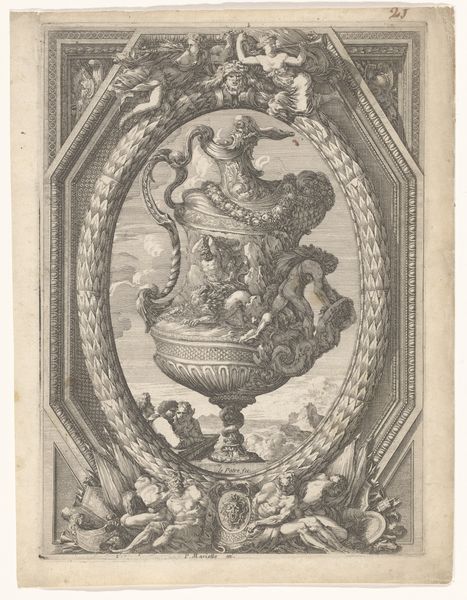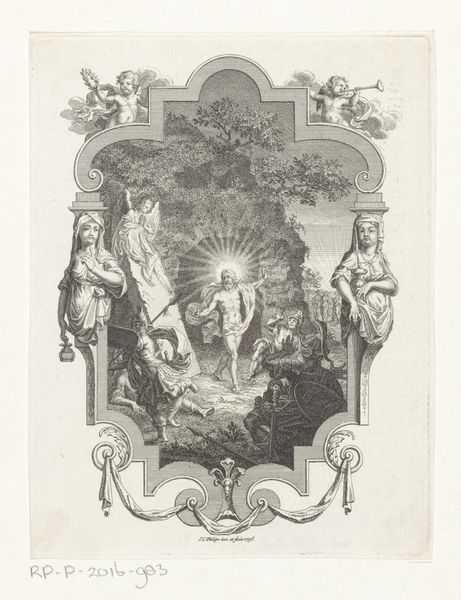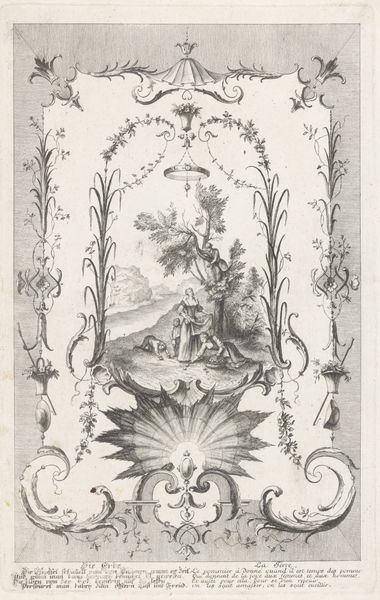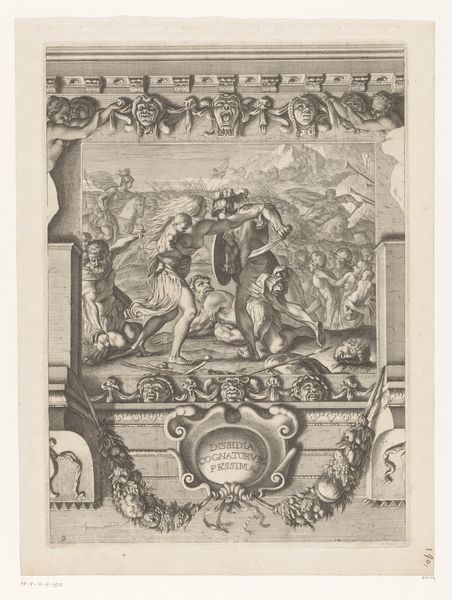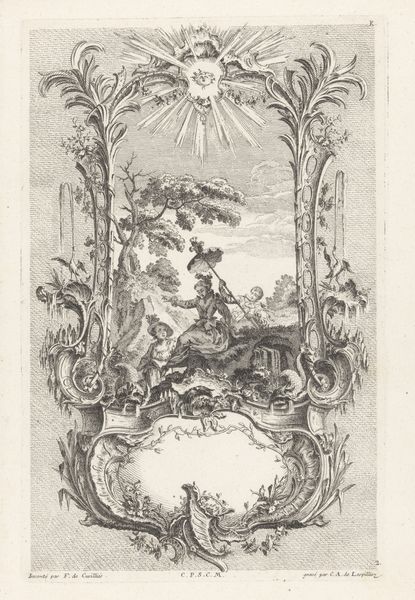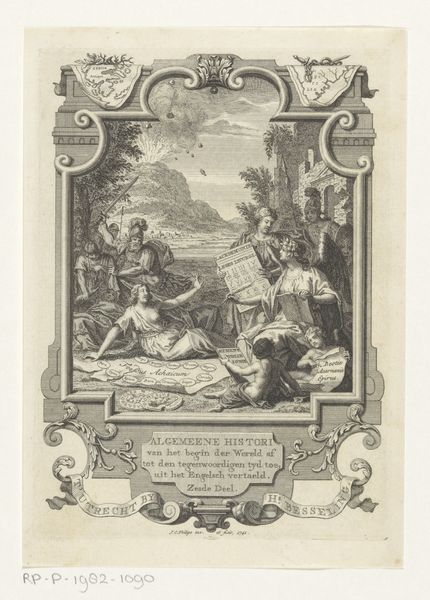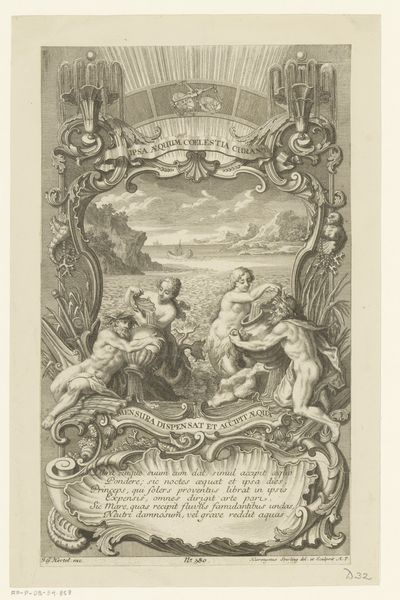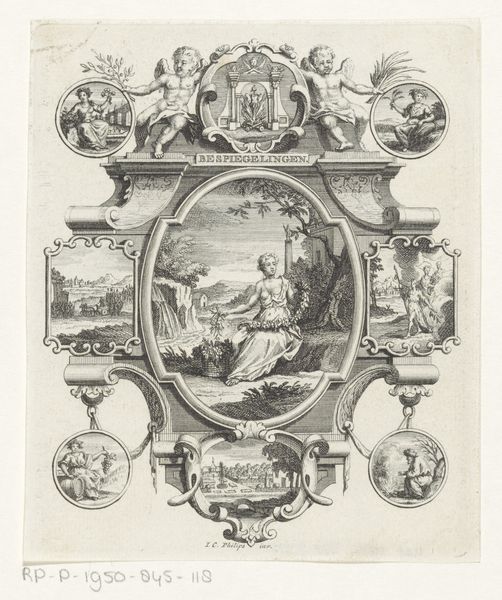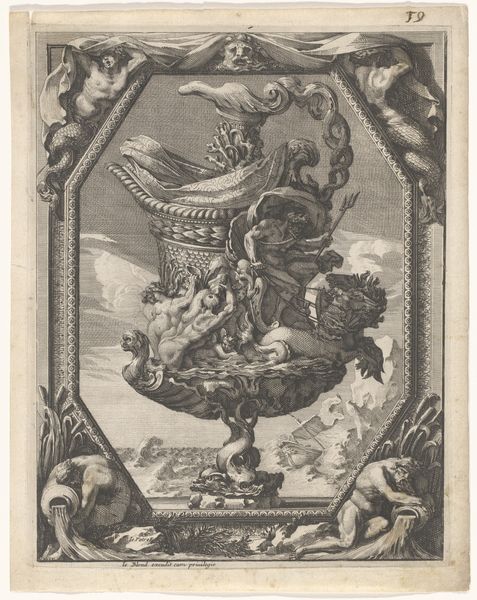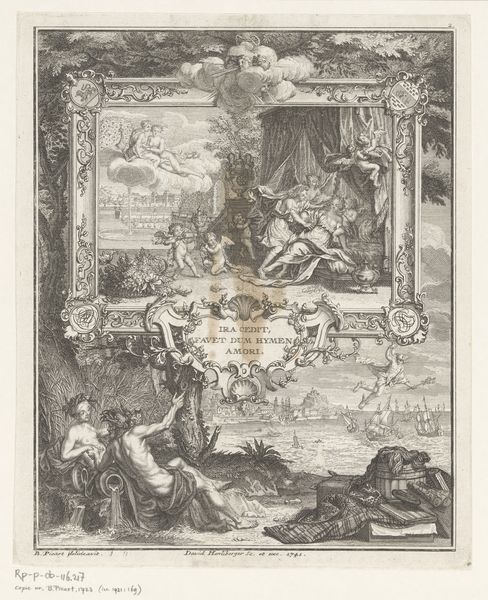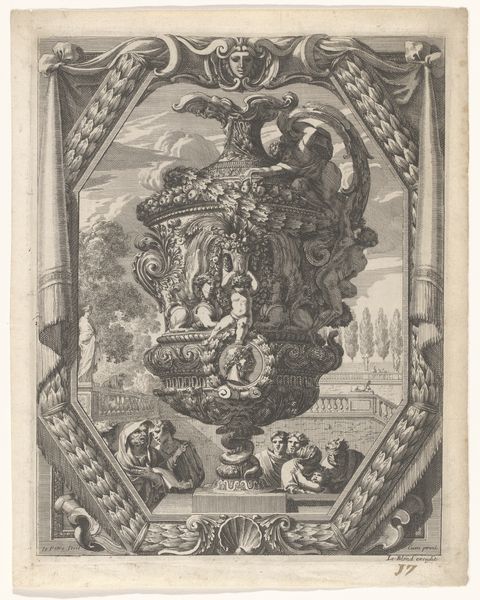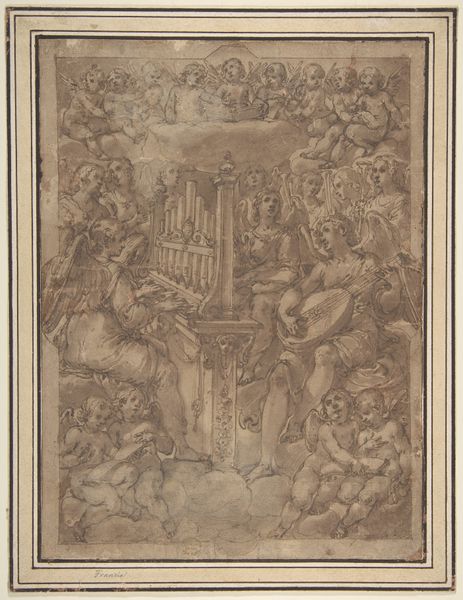
print, engraving
#
masculine design
#
aged paper
#
antique finish
#
toned paper
#
decorative element
#
allegory
#
baroque
#
parchment
# print
#
old engraving style
#
wood background
#
figuration
#
geometric
#
traditional style
#
line
#
history-painting
#
golden font
#
engraving
Dimensions: height 330 mm, width 225 mm
Copyright: Rijks Museum: Open Domain
Editor: This is Jan Goeree’s "Frontispiece Design from Corpus Inscriptionum," created around 1707. It's an engraving with incredibly fine lines. What strikes me immediately is how much is happening; it feels like a symbolic puzzle box. How do you interpret this work? Curator: It’s a wonderful example of Baroque allegory, absolutely brimming with classical references. Consider how Goeree uses figuration. Note the central female figures, one enthroned and another writing; their gestures act as anchors that guide us through a visual representation of knowledge being divinely imparted and meticulously recorded. Editor: I see that! There are smaller circular scenes, too. Are they connected? Curator: Absolutely! They're not mere decorations but act as symbolic portals. Think of them as visual footnotes providing context to the inscriptions at the core of the composition. Consider also the strategic use of crumbling architecture; its ruin represents past empires, knowledge reclaimed and reborn through the act of inscription. Editor: So, it’s about the cyclical nature of history and knowledge? Curator: Precisely! The visual vocabulary draws heavily on established archetypes. We must remember the cultural context: the desire to establish a connection with, and even to legitimize oneself through, a relationship with antiquity was profound in the 18th century. Ask yourself, what psychological weight did these symbols carry? Editor: I never thought about it in terms of psychological weight! It's interesting to consider how artists used symbols not just to represent ideas but also to evoke specific feelings and a connection to history. Curator: Exactly. And by recognizing the continuity of these symbols, we glimpse into the collective memory of a culture. The iconography employed tells a clear and enduring narrative about legacy and learning. Editor: This has really opened my eyes to seeing beyond the surface, searching for deeper layers of meaning through visual cues and context! Thanks for that.
Comments
rijksmuseum about 2 years ago
⋮
A weeping Minerva is depicted here near a dilapitated statue of the city of Rome, surrounded by all manner of ancient remains. The drawing is the design for the title page from a collection of Roman inscriptions compiled by J. Gruter and published in 1707. The engraving was used once again in 1726, with a different text, as the frontispiece for a survey of the monuments of ancient Rome.
Join the conversation
Join millions of artists and users on Artera today and experience the ultimate creative platform.
